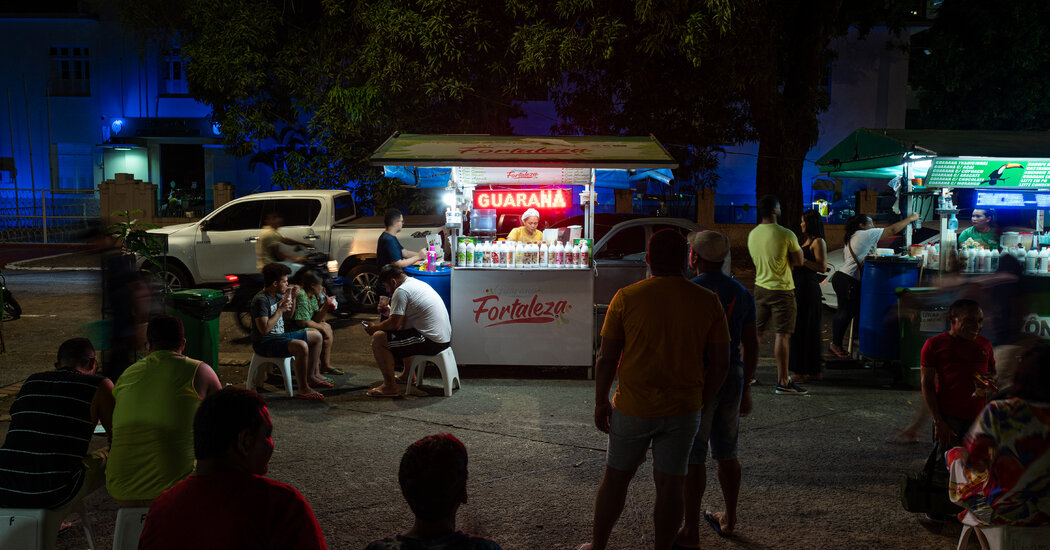A foreign visitor walking through Praça Brasil, a leafy square in the Amazonian port city of Belém, might think that the whirring blenders at a dozen nearby food carts were creating the most authentic açaí bowls on earth.
That would make sense, for Belém is the capital of Pará state, the global epicenter for growing, picking and exporting açaí, the blueberry-doppleganger-turned-super-fruit headlining smoothie shops worldwide. But in Belém, the deep-purple fruit is mostly consumed as a savory side dish for fish and shrimp, and the concoction sold at Praça Brasil — called guaraná da Amazônia — is a protein-packed shake whose ingredients include cashews, peanuts and a syrup made from guaraná seeds, which resemble coffee beans in looks but trounce them in caffeine content.
The shakes are rarely available outside the Amazon. The same could be said for many dishes popular in this food-obsessed city of 1.5 million, those made from fresh ingredients — with Indigenous names like tucupi, jambu, taperebá and pirarucu — that are tough to come by in Rio de Janeiro, let alone outside Brazil. This fall, I visited Belém for three days and ate myself silly, hitting up 20 or so restaurants and snack bars, devouring food and drink so different from even the Brazilian norm that it felt like I had stumbled into some secret culinary kingdom.
Attractions in a Amazon port city
A “guaraná da Amazonia” costs about 20 reais, or just over $4 at 4.90 reais per dollar, and yes, it can be ordered with açaí blended in. But the shakes are best with bacuri, a fruit with apple-adjacent notes that seemingly everyone loves. Add it to the list of ingredients that you’ll find outside the region only in frozen form, if at all.
That’s because fresh bacuri, like many of the other regionally grown ingredients, travels badly. So do many tourists, whose only urban stop in the Brazilian Amazon is the not-quite-as-delicious Manaus, five days by boat or two hours by plane from Belém, and the most accessible base for venturing out to rainforest eco-resorts or on fancy boat trips.
That will change, though, as Belém ramps up its infrastructure to welcome tens of thousands of visitors in 2025 when it hosts COP30, the 30th edition of the United Nations climate change conference.
Visitors will find Ver-o-Peso, a humming market of Amazonian fish, fruit and Brazil nuts; upscale dining and shopping at Estação das Docas, set in revamped 19th-century riverside warehouses; and a…
Click Here to Read the Full Original Article at NYT > Travel…
